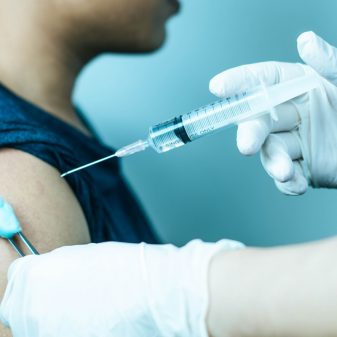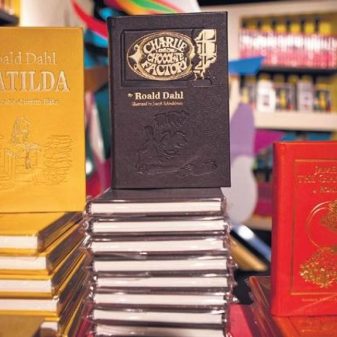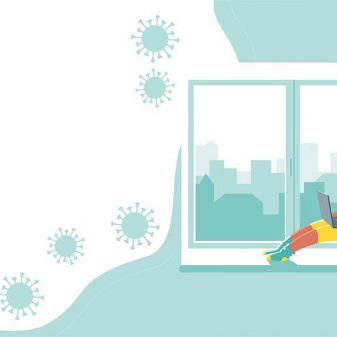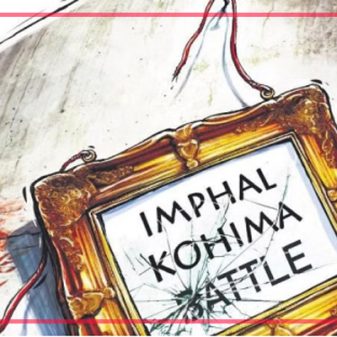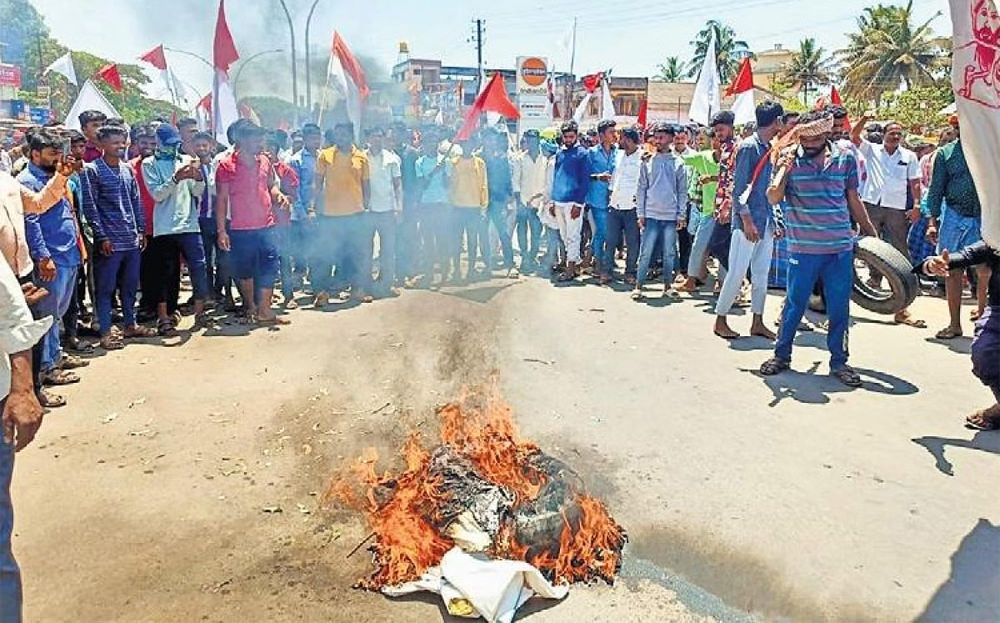
B S Arun
Along with this, another trouble for the Basavaraj Bommai government is from the Muslims (11–13% of the state population), whose 4% quota has been scrapped.
The protests against the newly announced reservation policy by the BJP government in Karnataka threaten to spread across the state even as parties are weighing the fallout of the same on them in the assembly elections scheduled for May 10.
Violence was witnessed in Shikaripura in Shivamogga district—from where former CM and Lingayat strongman B S Yediyurappa was elected eight times—during a procession against internal reservation for Scheduled Castes by the Banjara community. Banjaras and three other SC sub-groups have started an indefinite agitation against internal reservation, part of the new policy.
Along with this, another trouble for the Basavaraj Bommai government is from the Muslims (11–13% of the state population), whose 4% quota has been scrapped. Since the new policy was announced on March 24, the state has been seeing protests in Bengaluru, Koppal, Raichur and a couple of other places, and there is fear that this too may spread statewide.
The Bommai government, in October last year, increased the quota for SCs by 2%, taking it from 15 to 17%, and for STs from 3 to 7%. Last week, the government unveiled a new policy by removing the quota for Muslims—which they exclusively enjoyed—and gave 2% to Lingayats, taking their reservation to 7%, and the remaining 2% to the Vokkaligas, taking it to 6%. The policy shifted Muslims to the EWS (economically weaker section) category, clubbing them with Brahmins, Jains and others. The defence of Bommai over this has been that reservation to Muslims is not part of the Constitution and that Ambedkar himself was against providing quotas based on religion. In any case, he says, they are eligible for quota under EWS, which has a reservation of 10%.
Karnataka, thanks to the Mysore maharajas, had been a forerunner in providing reservations to those in need. As far back as 1918, the maharaja set up the Millers Commission, which recommended the inclusion of Muslims among backward classes. After Independence, some of the backward classes commissions made similar proposals. The Muslims were given reservations in 1994. This and the Muslim quota in seven other states, including Kerala and Tamil Nadu, continue.
However, the move by the then-united Andhra Pradesh of late Y S Rajasekhara Reddy, according reservation to the Muslims, was questioned in the Supreme Court, which struck it down.
As regards internal reservation for the SCs, this may be akin to opening a Pandora’s Box if the protests lead to a statewide movement. Let us look at what led to this: The SCs, who account for around 20% of Karnataka’s population of about 6.7 crore and have 101 sub-castes, are divided into four categories. They, according to SC leaders, include SC Left (30 sub-sects, an estimated 33–34 lakh population), SC Right (48 sub-sects, 31–32 lakh population), Touchables (4 communities, 20 lakh population), and Other Communities (19 sub-sects, nearly 19 lakh population).
The Touchables group consists of sub-sects such as Banjara, Bhovi, Koracha and Korama, which are up in arms against the government. They fear that due to internal reservation, the government will throw them out of the SC category, and they will be deprived of the benefits. Fearing large-scale fallout, Bommai has been trying to pacify them and has said the quota for the Touchables would be fully protected and that they need not fear anything. There are 51 seats in the assembly reserved for SCs and STs.
That brings us to the other change in the reservation policy—increasing the quota for Lingayats and Vokkaligas, the two most powerful communities. The former, core support base of the BJP, and the latter, majorly backing JD(S) and Congress. The two communities are happy with the policy. Bommai should be relieved that the Panchamasalis, the most influential sub-sect among the Lingayats, who are about 60% of the caste population and are up in arms against the government, have announced that they would support the new policy. They were demanding separate reservations for them.
What next? For the policy to become a law, there is a lengthy process. The decision has to pass the test of law. The tasks before Bommai are two-fold: Immediately take steps to contain the fallout of protests. Any violence would be a setback to the ruling party. Two, he has to impress upon the BJP government at the Centre to ensure that the new policy is included in the Ninth Schedule to ensure protection and taken out of the purview of the courts.
For that, the Centre must bring the proposal to Parliament and pass it in Rajya Sabha and Lok Sabha with a two-thirds majority, as it must be a constitutional amendment. Can the Union government bring it before Parliament during the current session, which ends on April 6? An unlikely scenario.
Secondly, as regards protests by the Banjaras and others, the BJP government cannot do much. Now that the model code of conduct has kicked in, the party can only promise that the policy will continue if BJP comes to power again.
However, as regards the political fallout of the scrapping of quota for Muslims, BJP may not worry much since Muslims are, in any case, not the core vote bank of the party. Separately, both issues may be questioned before the courts. Some organisations have already stated this openly. In this case, it is going to be a prolonged legal battle.
(The writer is a Senior journalist based in Bengaluru)(Courtesy: The New Indian Express)

